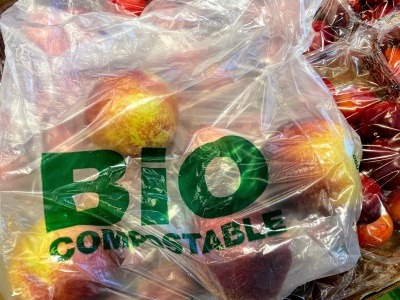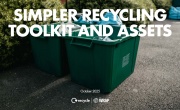Plastics report guides design industry on appropriate compostables usage
A Plastic Planet has released a report today (20 October) that aims to inform the design industry, and brand owners within it, on the correct usage of compostable materials as an alternative to plastic packaging.
The report, titled The Compostable Conundrum, was supported in its publication by The Red and Green List and includes guidance targeted at a range of stakeholders, ranging from packaging designers; professionals across the consumer goods industry; governmental bodies; and retailers and businesses. The paper calls for the usage of compostables only when their end-of-life is designed in order to facilitate the movement of food waste into the composting waste stream, reduce levels of soil pollution, and aid in the regeneration of soil designated for soil production.
 In terms of the classification of compostables, the report divides materials into two categories: red list and green list items. Green list items, which are appropriate for disposal in food waste – as the compostable material acts as a bio-conduit for food waste without contaminating it – include carrier bags, fruit and vegetable stickers, and teabags. Red list items, which should not be disposed of with food waste, include pallet shrink wrap, bottles, non-food packaging bags, and clothing apparel and shoes packaging.
In terms of the classification of compostables, the report divides materials into two categories: red list and green list items. Green list items, which are appropriate for disposal in food waste – as the compostable material acts as a bio-conduit for food waste without contaminating it – include carrier bags, fruit and vegetable stickers, and teabags. Red list items, which should not be disposed of with food waste, include pallet shrink wrap, bottles, non-food packaging bags, and clothing apparel and shoes packaging.
In the wake of the report’s release, stakeholders are being encouraged to provide their feedback on the guidance within. The publication comes after calls from campaigners for the industry to implement a comprehensive list on the usage of compostable materials in order to tackle the global waste crisis.
According to A Plastic Planet, the document should provide clarity in terms of the role of compostable food packaging within society, especially in light of the UK Government’s pledge to reduce the amount of food waste going to landfill by 20 per cent over the next four years. In tandem with this, the Government is also preparing to introduce separate food waste collections from households, businesses, and organisations – to be implemented by 2023, according to the Environment Bill – which could see the amount of food waste collected increase by 1.35 million tonnes by 2029.
A Plastic Planet asserts that the document should also foreground the part compostables can play in the improvement of soil health, outlining that, when collected alongside food waste, the material can be transformed into fertile composted biowaste. This seems especially pertinent considering recent research from the Food and Agriculture Organisation (FAO) that revealed the world’s soils are up to 23 times more polluted with plastic than its oceans – it also uncovered that 33 per cent of global soil is already degraded, with this figure having the potential to reach 90 per cent by 2050. It is also why proper compostable education is required, states A Plastic Planet, as when specified wrongly, the material will fail to serve as a viable and sustainable replacement for plastic, contributing further to the waste and soil degradation issues listed.
Sian Sutherland, A Plastic Planet co-founder, commented: “A like-for-like switch from plastic to compostable packaging across all packaging segments will not work, but understandably there is currently great confusion for packaging designers and brand managers. We wanted to clarify exactly why and when compostable packaging is a good solution.
“Generally, if it helps bring food waste into the food waste system – the composting system, then it’s a good use of a compostable solution. Teabags, ketchup sachets, and crisp packets for example will all be contaminated with food and it makes good sense to keep that food in the right waste stream.
“On the flip side, no composter wants to be sent compostable packaging that really should be in a different waste stream – paper, for example. You’re not going to throw out your compostable clothes delivery bags with your food waste. It will just end up going to landfill or incineration. The feedstock of compostable biomaterials is limited and it is crazy for us to be using them wrongly, a waste of a valuable resource.
“Compostables have a crucial role to play in ending the scourge of plastic, but only if they are used correctly. We created this report to help clear up the very understandable compostable conundrum so we keep our composting systems and our soils clear of plastic.”
Charlotte Williams, Professor of Inorganic Chemistry at the University of Oxford, said: “A vital step towards regenerating our damaged agricultural soils is recognising the role compostable packaging can play in restoring them. The scale of the soil health crisis is unprecedented, and presents a genuine threat to food security.
“Once we understand this, it’s clear why compostable materials should be used to substitute plastic in certain product formats where we know they will be processed properly.” 






